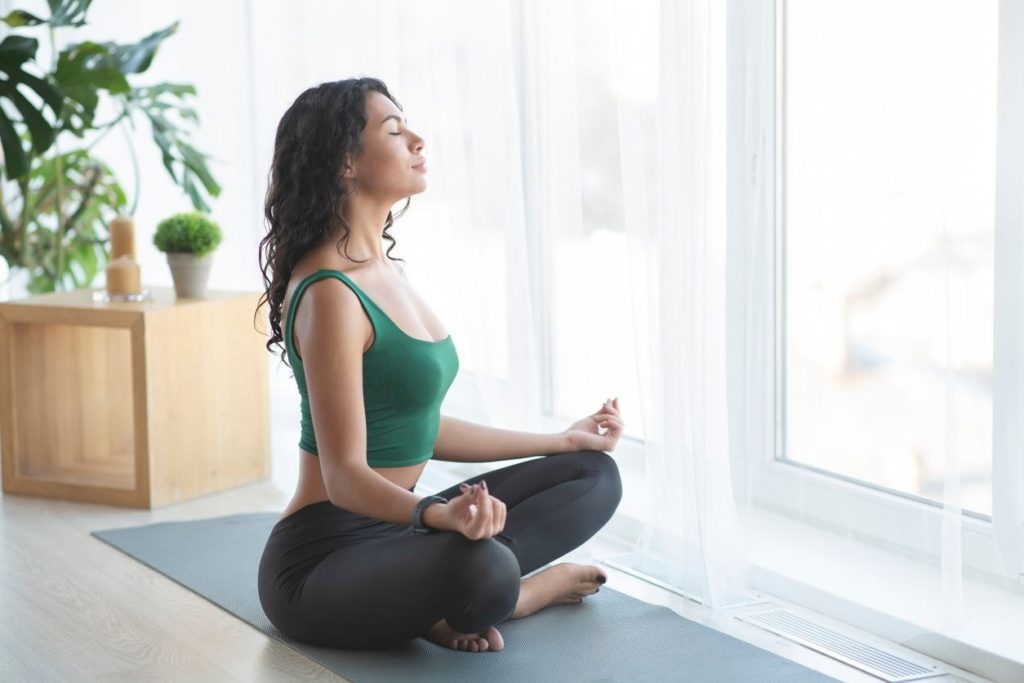How to breathe to meditate and calm your mind?
Caution : You must consult your doctor for your health. This page presents only a personal and alternative point of view which should not be considered as an attempt to prescribe medicine.
Meditation is one of the best natural remedies for stress.
Talking about meditation comes down above all to talking about breathing.
Besides its positive effects on the organism, breathing through meditation also helps to have a calm mind.

Become aware of your breathing to meditate
In order to meditate and calm your mind through the breath, you will have to practice, including following certain steps.
So start by adopting an active resting posture that you can maintain for a few minutes.
For example, you can stand, kneel or sit on a chair with your back straight.
The first step in the actual procedure will be to regulate your breathing rate.
To do this, breathe naturally for a few moments while paying attention to your respiratory rate.
Then try to adjust this pace so that your two respiratory phases (inspiration and expiration) slow down.
Take special care to take a short break after each exhalation.
The real exercise will be to maintain this pace to the point of assimilating it to your natural breathing rhythm.
This exercise in which you will have to inhale through your nose and exhale through your nose can take a few minutes.
Once this is achieved, you will then have to discipline the shape of your breathing.
Indeed, there are various forms of breathing, some as specific as the others.
One of the most suitable for meditating and calming the mind is abdominal or ventral breathing (by solicitation of the diaphragm).
Thoracic or clavicular breathing must absolutely be banned.
So start by placing one hand on your chest and the other on your stomach.
Try to identify the one that moves the most while breathing normally.
Breathe so that the hand resting on your chest and shoulders are frozen, then relax.
This action should make you breathe out enough.
You will then need to make your breathing more fluid.
Once you can breathe comfortably through your stomach, try to decrease the pace.
This will involve starting a comfortable inhalation and gradually slowing it down until it stops.
While standing still, finally try to breathe out.
Once you have mastered the breathing with the diaphragm , you can do this frequently.
Then try to slow down your breathing cycle, going from ten to twenty or thirty seconds, for example.
The next step in your learning will be to seek to feel the movements as you breathe slowly and deeply.
To do this, pay attention to the way your body moves in order to locate the moving parts, their pace, and their direction.
Also be sure to identify areas that relax and those that tighten.
After that, try to deepen your breath to internally massage the area below your belly button.
Lower your pelvic floor as you inhale and raise it as you exhale.
You will thus be able to immerse your body in a state of relaxation thanks to the parasympathetic system, which soothes and relaxes the body.
What are the benefits of breathing through meditation?
Although breathing in an ordinary or natural way is innate, knowing how to breathe well is very important.
As you probably know, human emotions are closely related to breathing.
Just like meditation, learning to breathe properly will benefit you in every way.
At first glance, breathing well ensures a decrease in stress level, for the simple reason that the respiratory rate greatly influences the mind.
Having control of your breathing will therefore allow the channeling of adrenaline, better concentration and slower heart rate.
Likewise, good breathing will optimize your digestion.
Indeed, breathing properly facilitates the metabolism of fats and sugars by the body.
This also makes it possible to optimize the neurovegetative functions acting on digestion.
Also, breathing well reduces fatigue.
Deep breathing actually allows better oxygenation of the cells and therefore promotes the release of toxins from the body.
In addition, calming your mind passes above all by a good state of health.
Through meditation, good breathing will also help you boost your well-being.
Breathing well will strengthen your immune system and cardiovascular system, thus lowering your blood pressure.
With the breath and the mind interconnected, you now know how to use your breath for the benefit of your mind through meditation.
The secret of meditative breathing
After doing all of these breathing techniques before and during meditation, there comes a time when you have to let go of the breath.
As your mind calms down, breathing naturally stops.
It becomes so subtle that you switch to another mode: cellular respiration.
At this point your mind is extremely still and you experience timeless meditative states.
So breathe at first to loosen up your diaphragm, but then let go and forget your breath.
❤ The ultimate guide to breathing
Intermittent Breathing : Discover the method to quickly relieve your anxiety and chronic fatigue (positive effects from the first use).Read also :
Previous article : How to breathe to lose weight and lose belly?
Next article : How to work on your breath to sing better?

